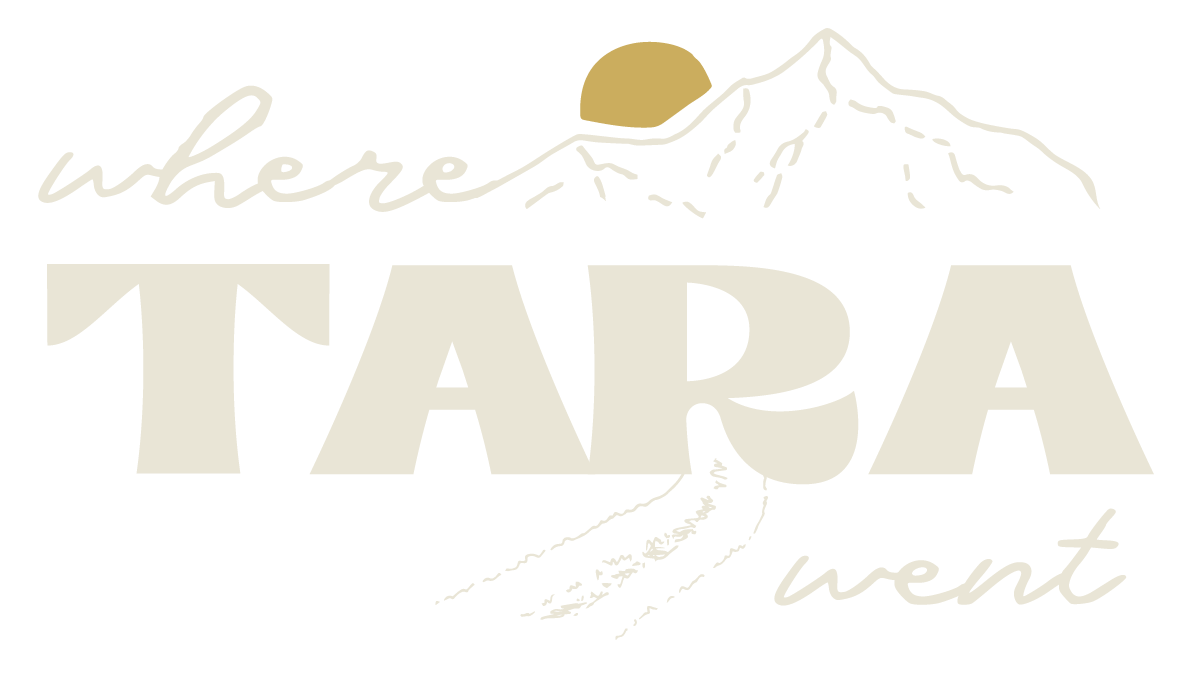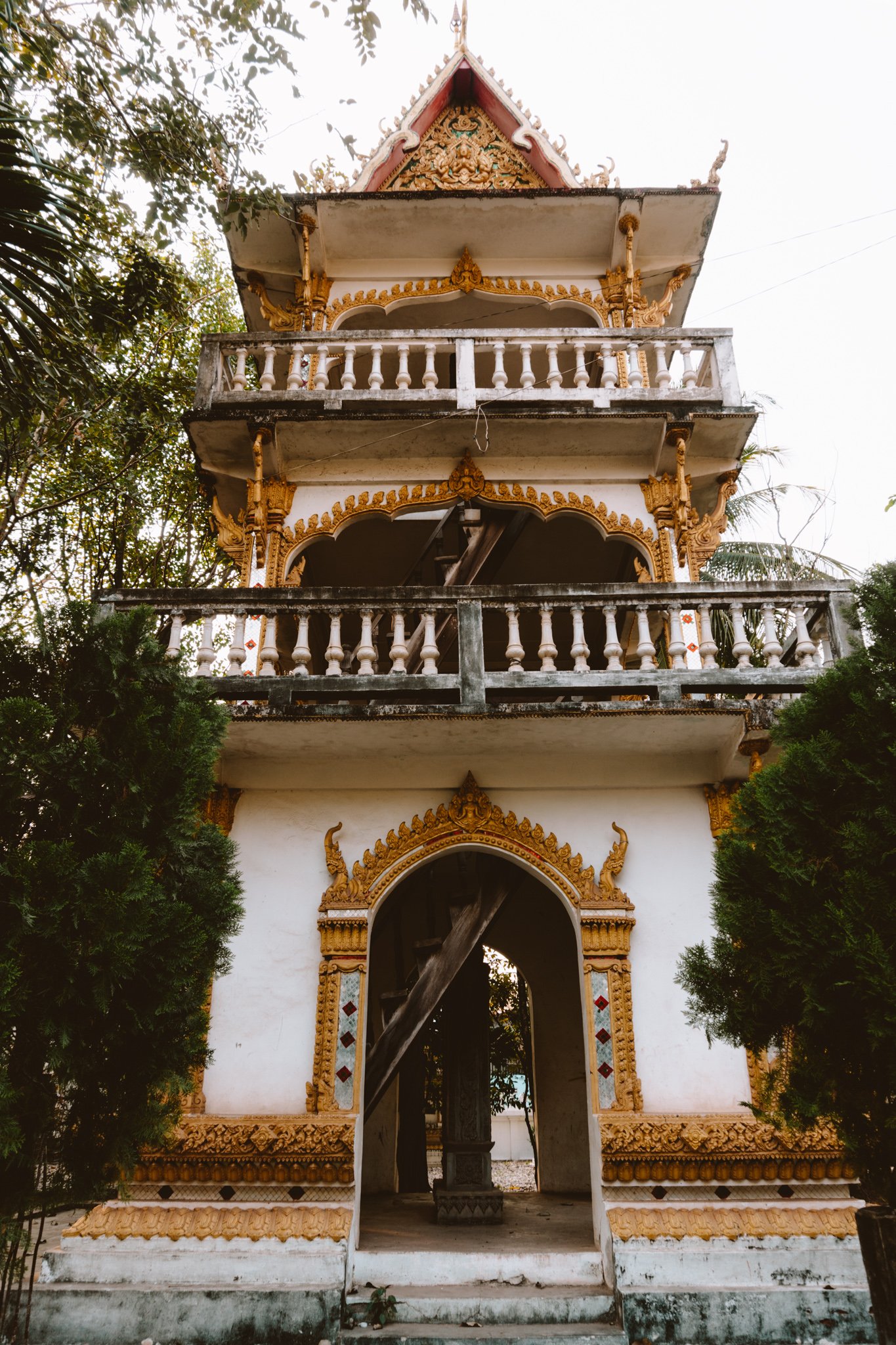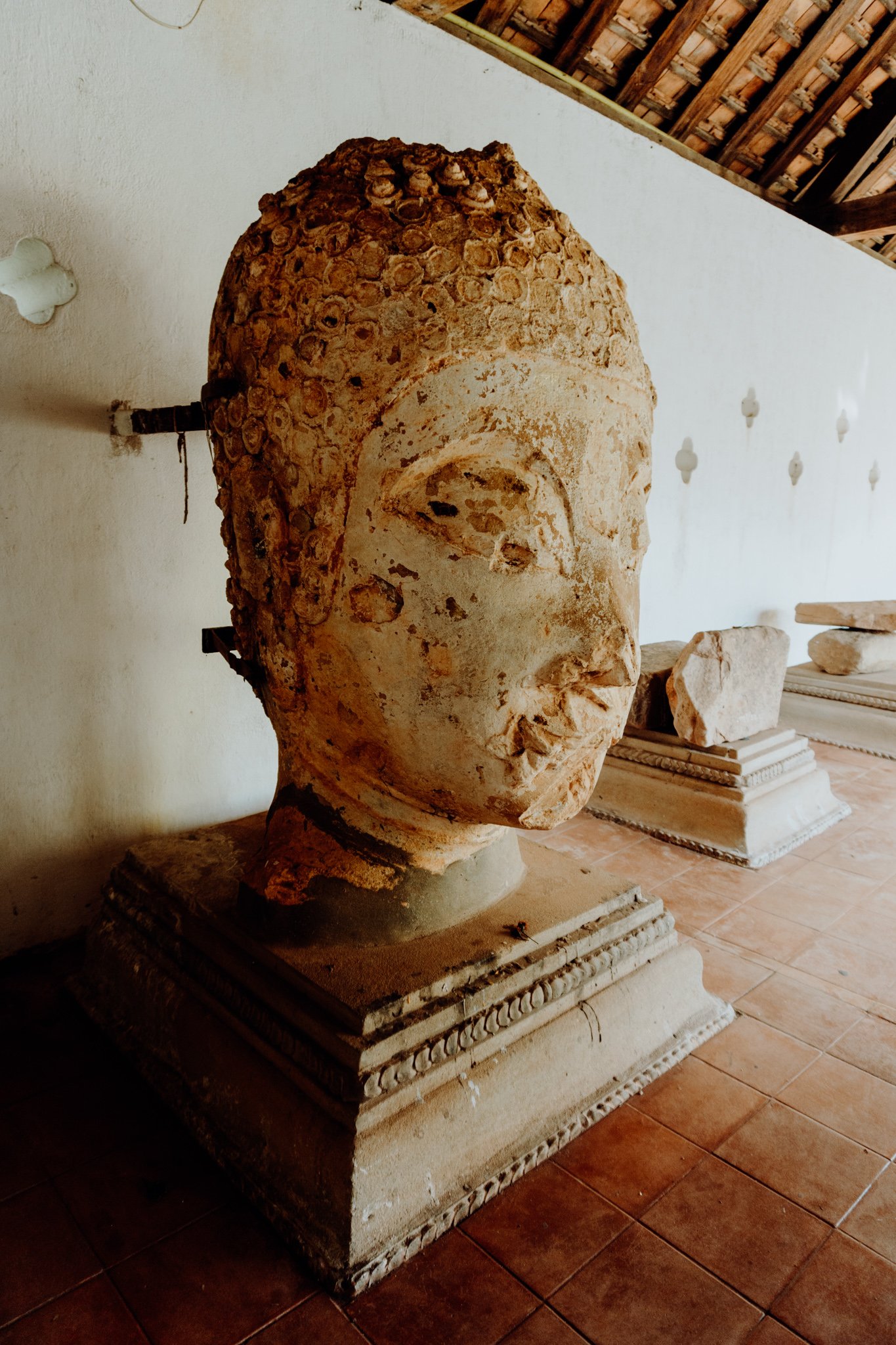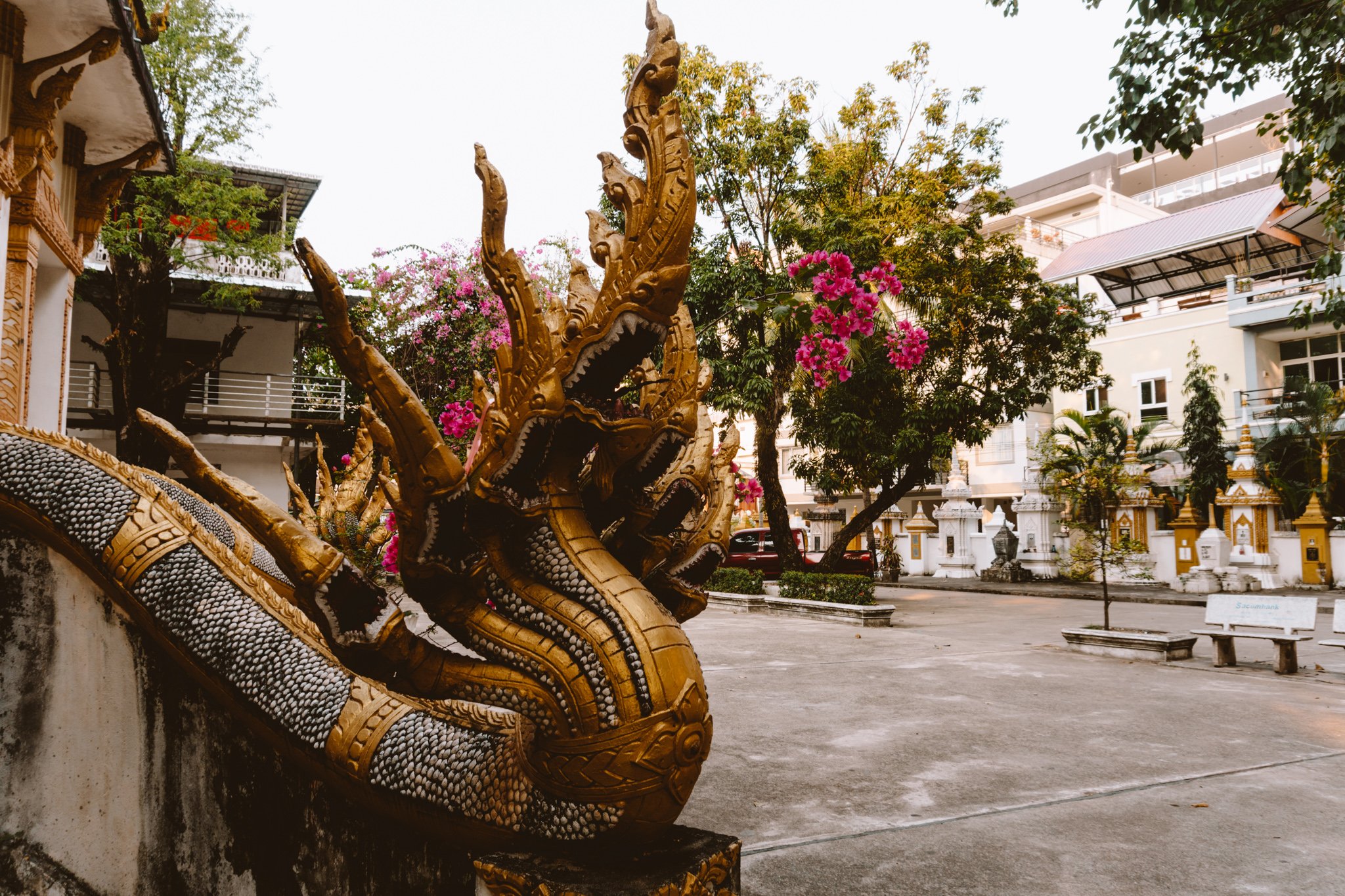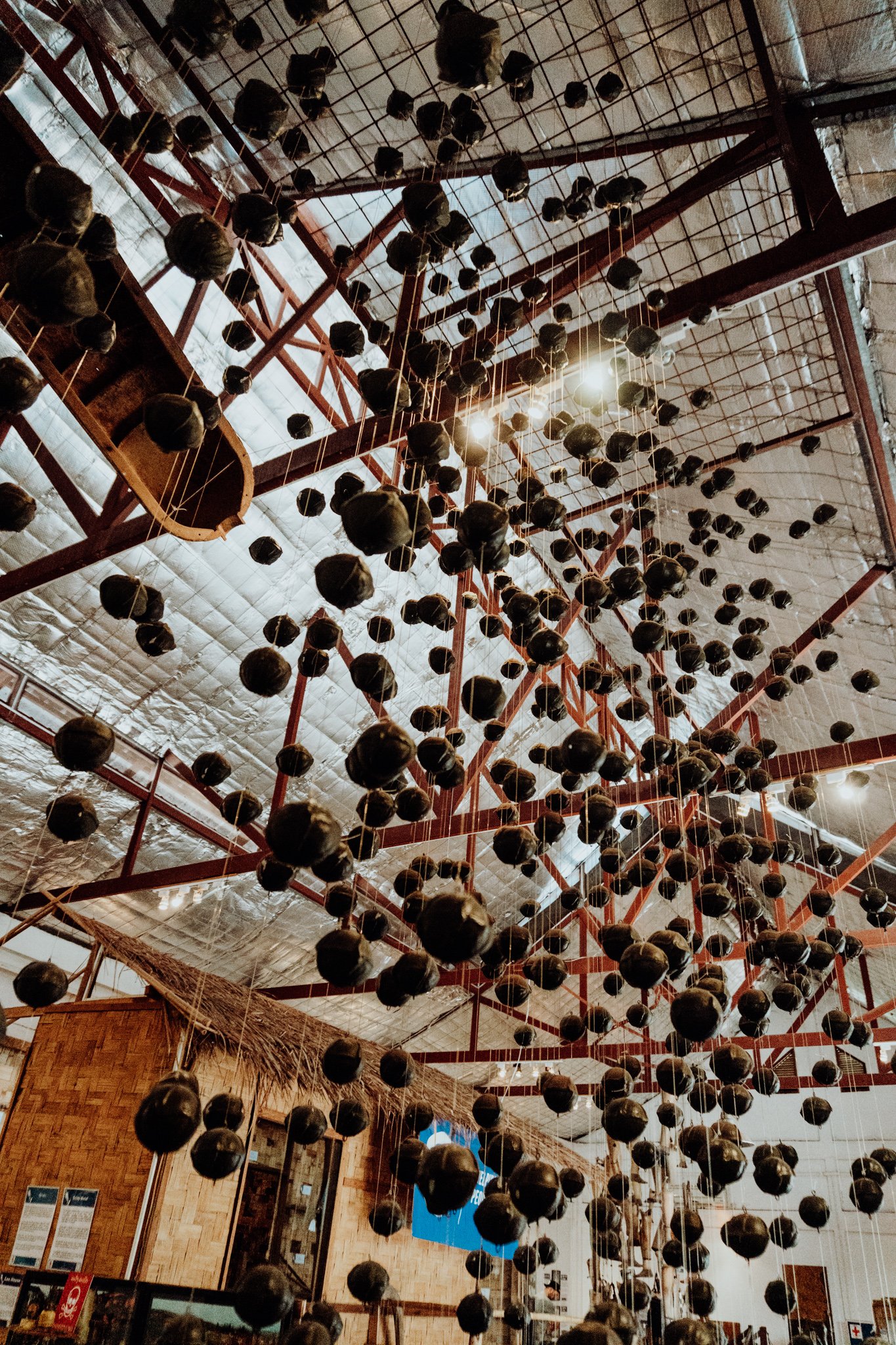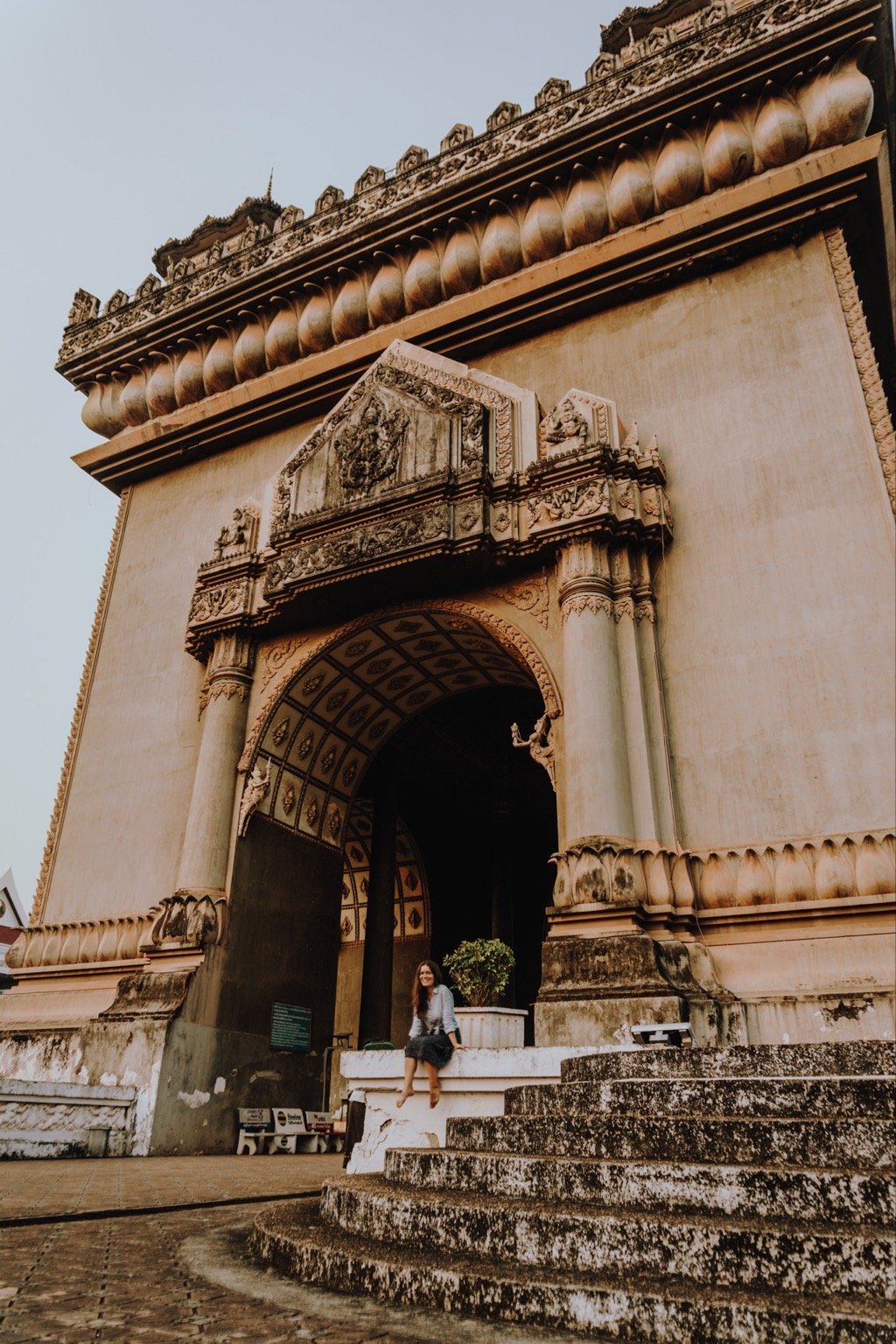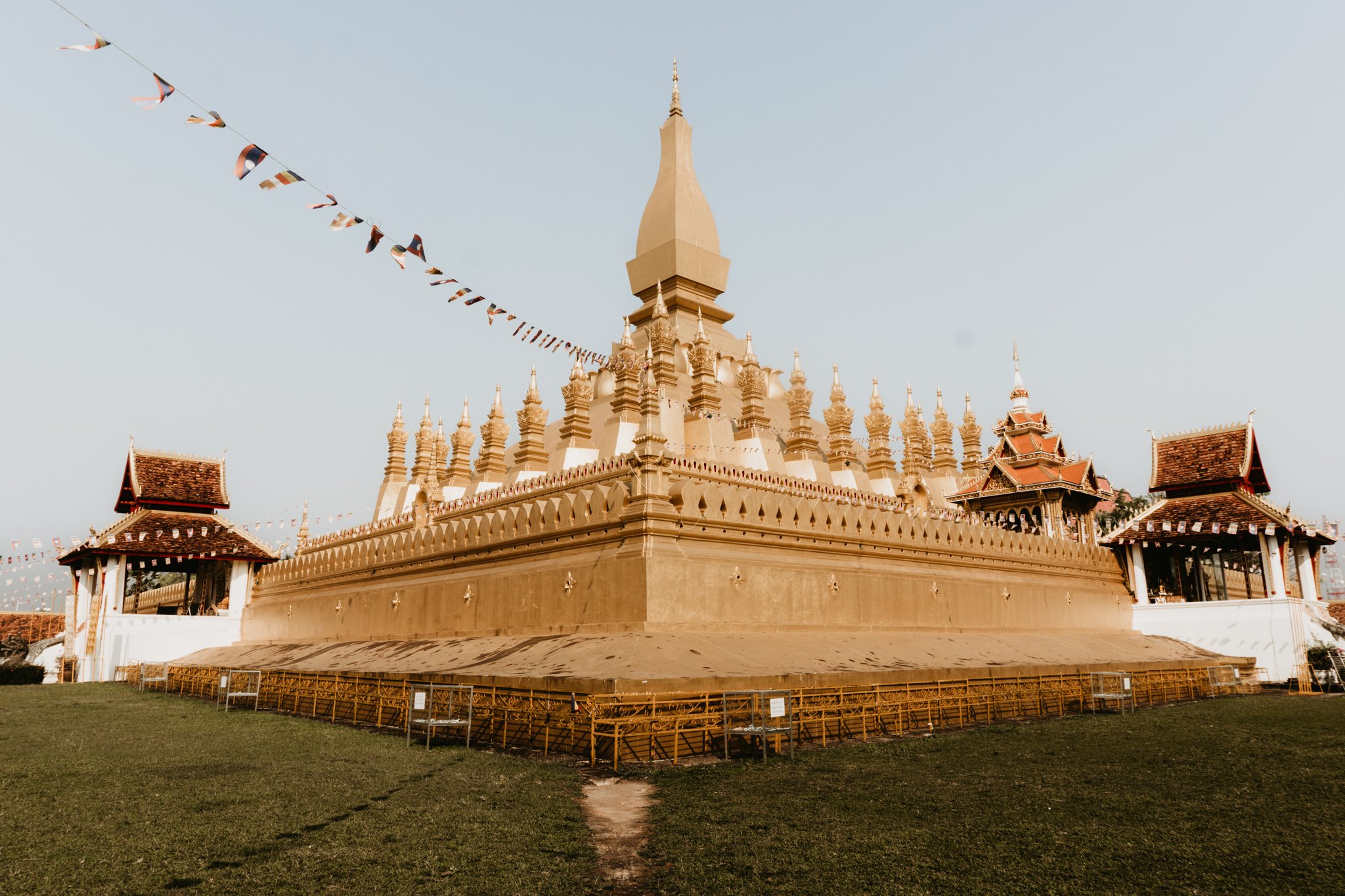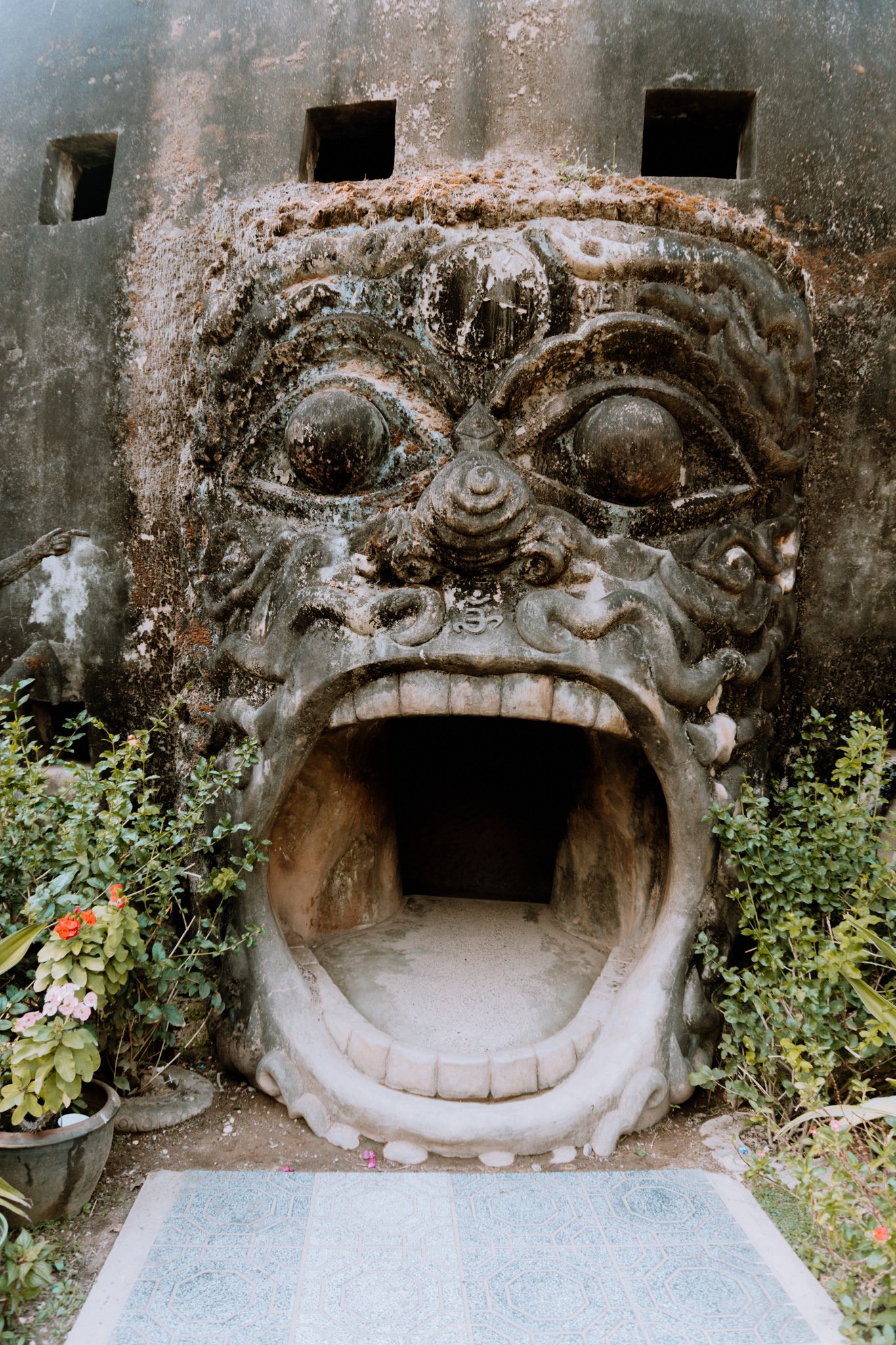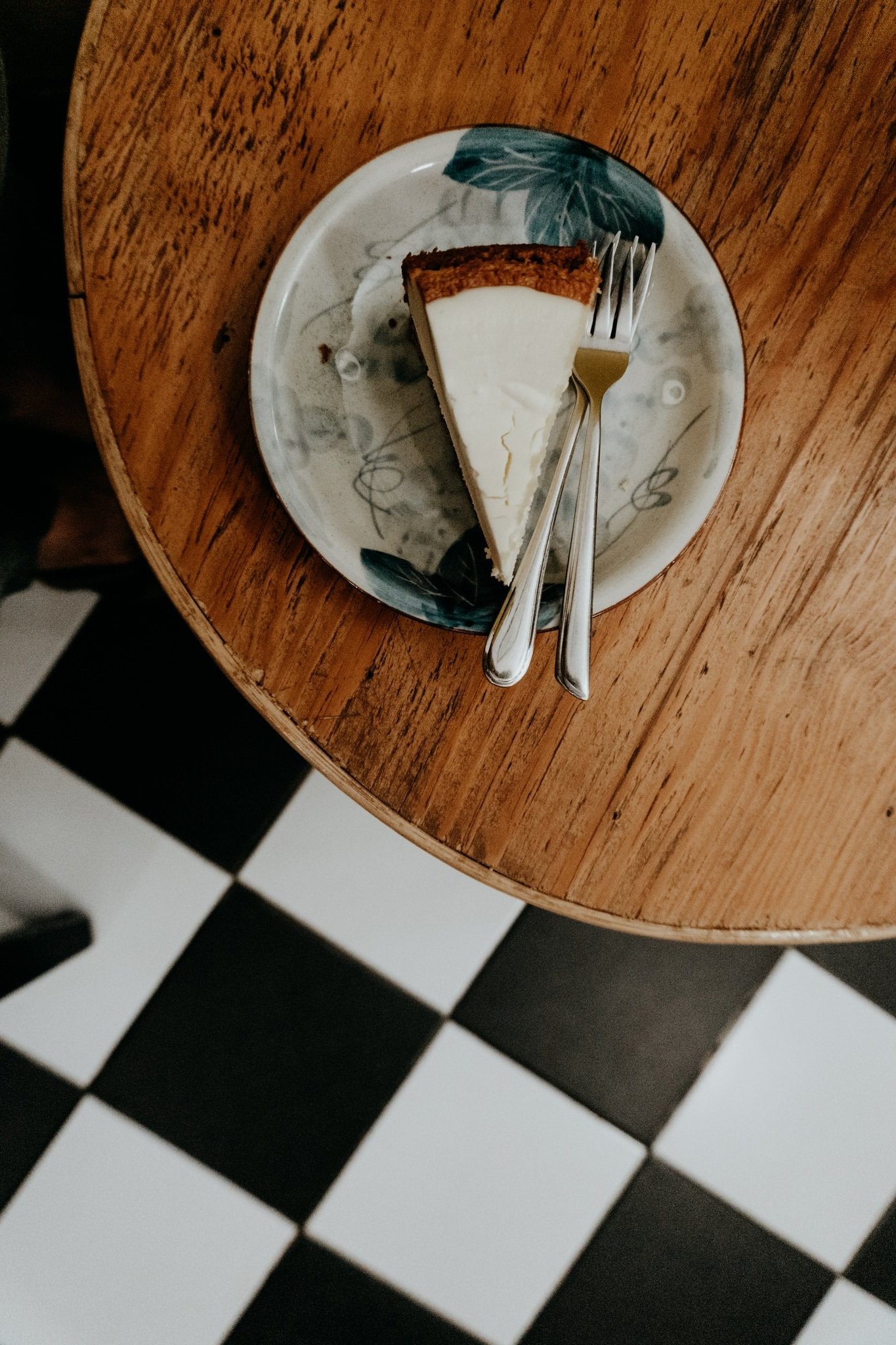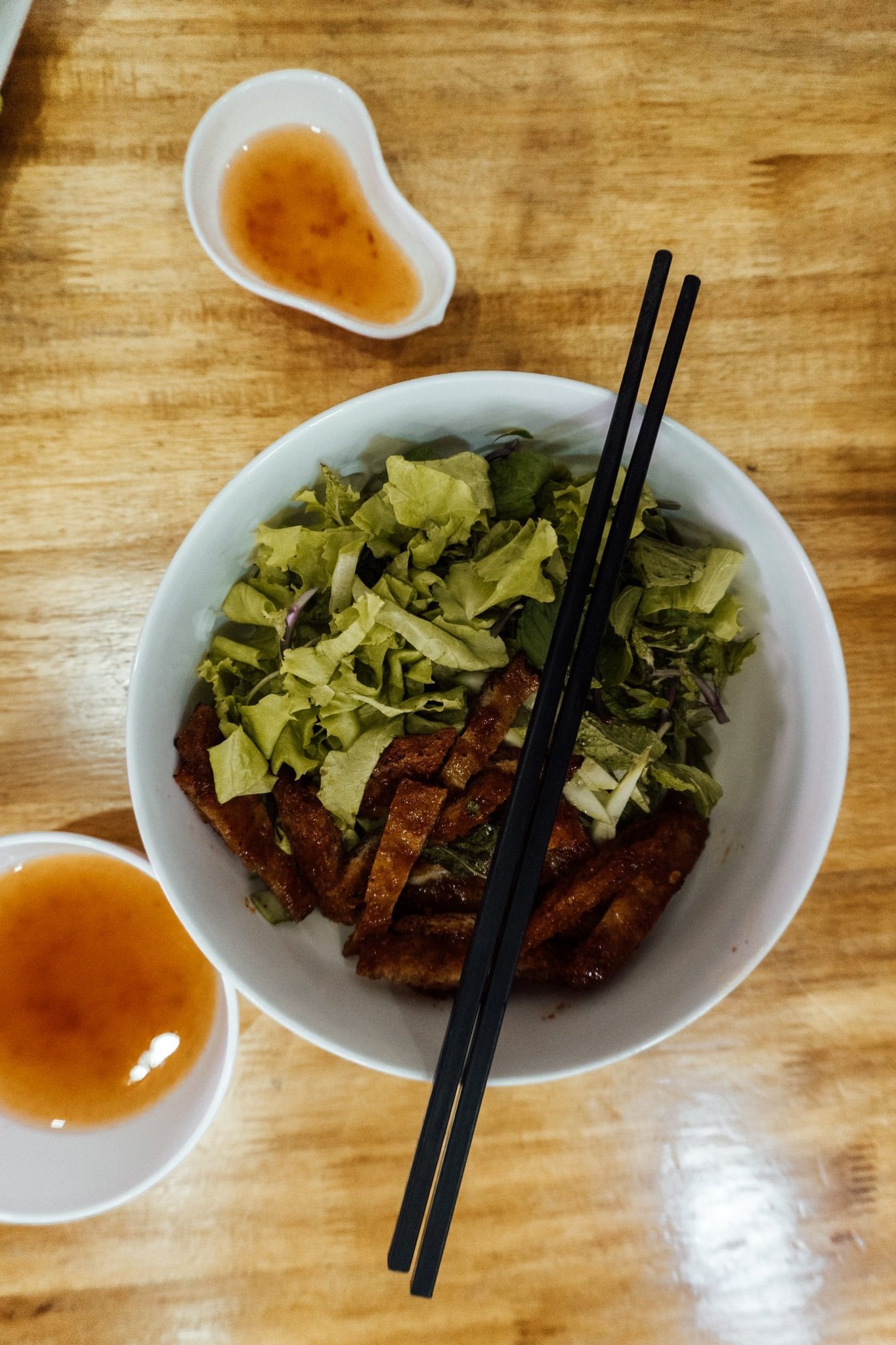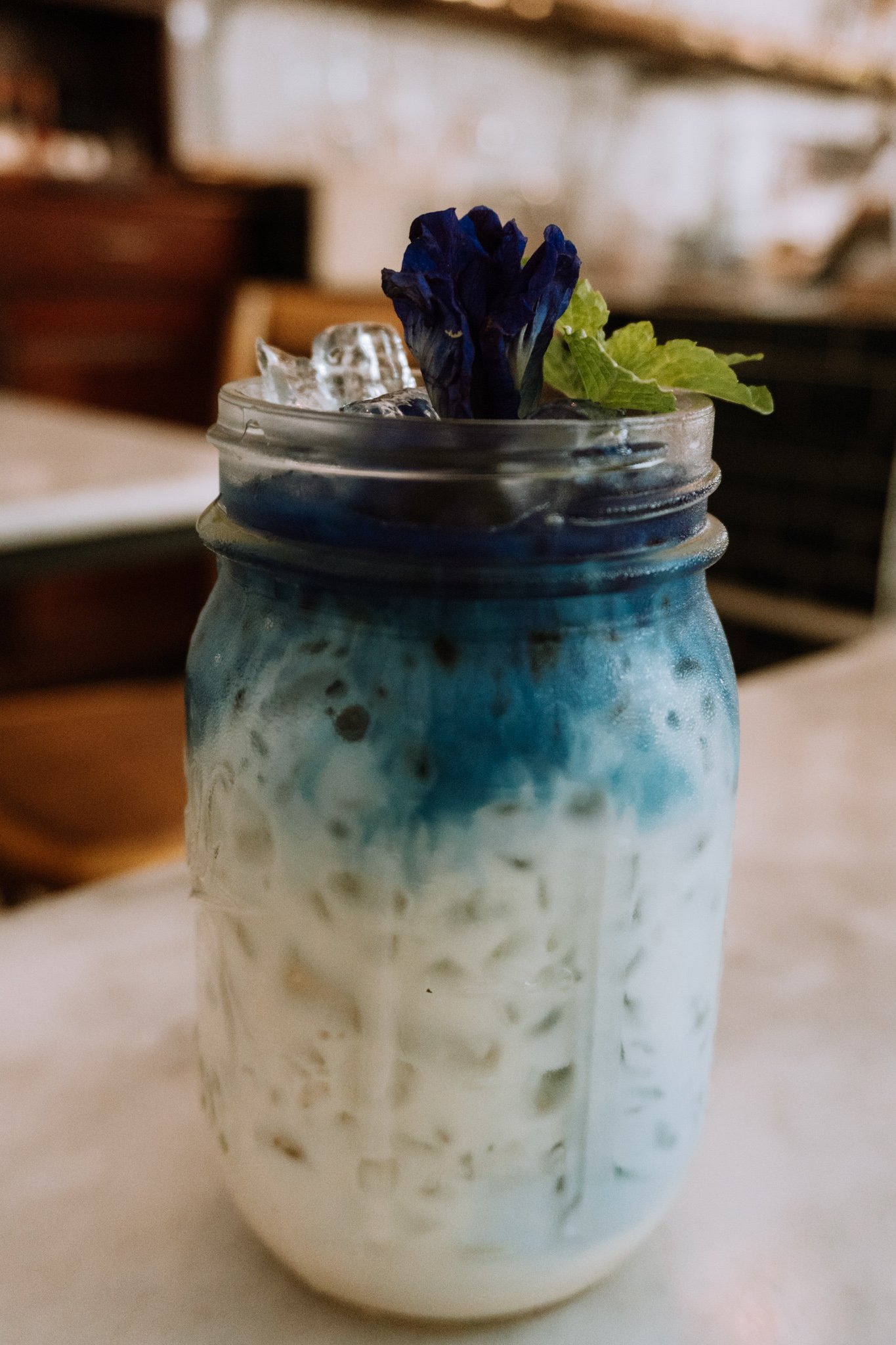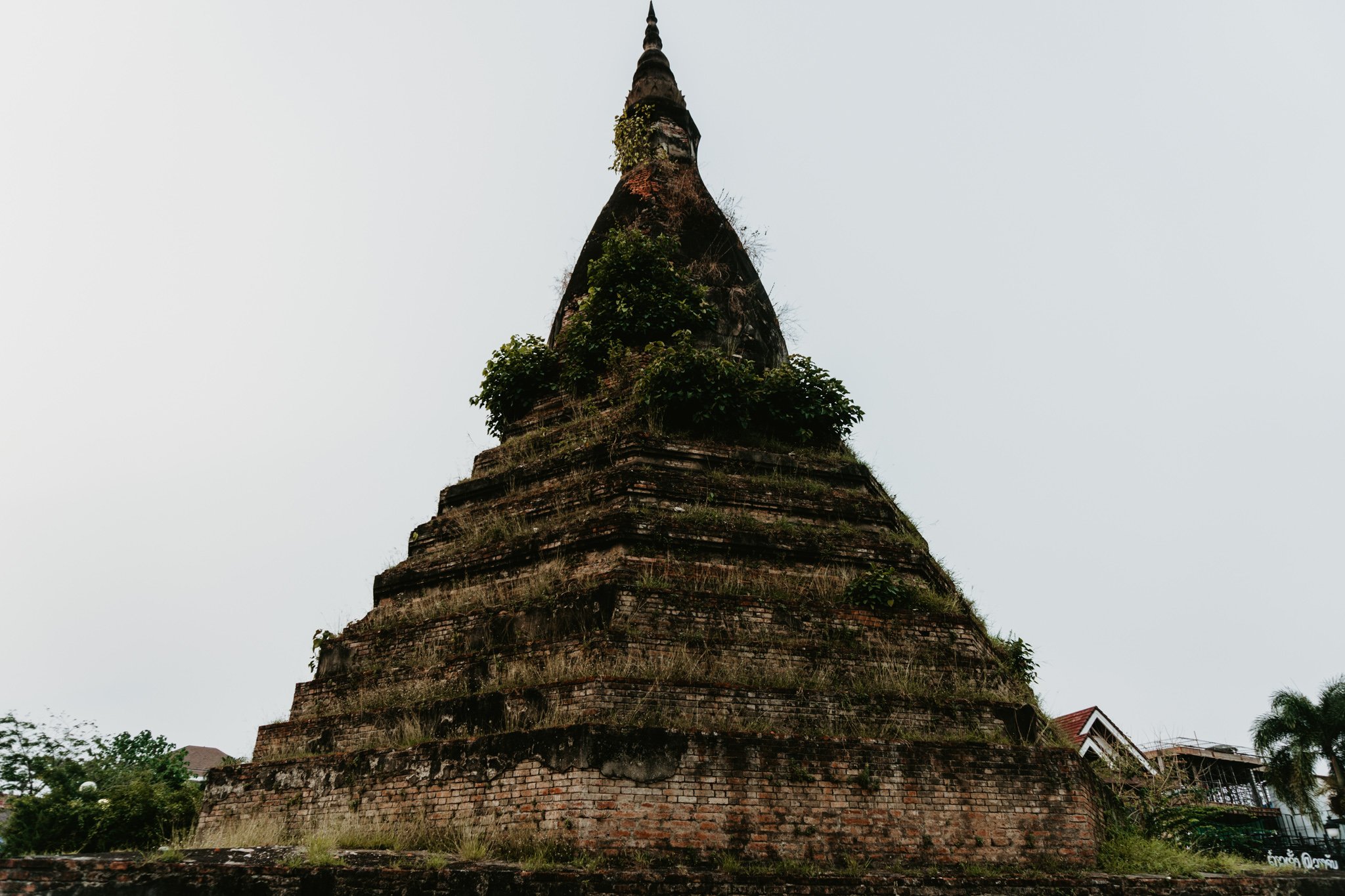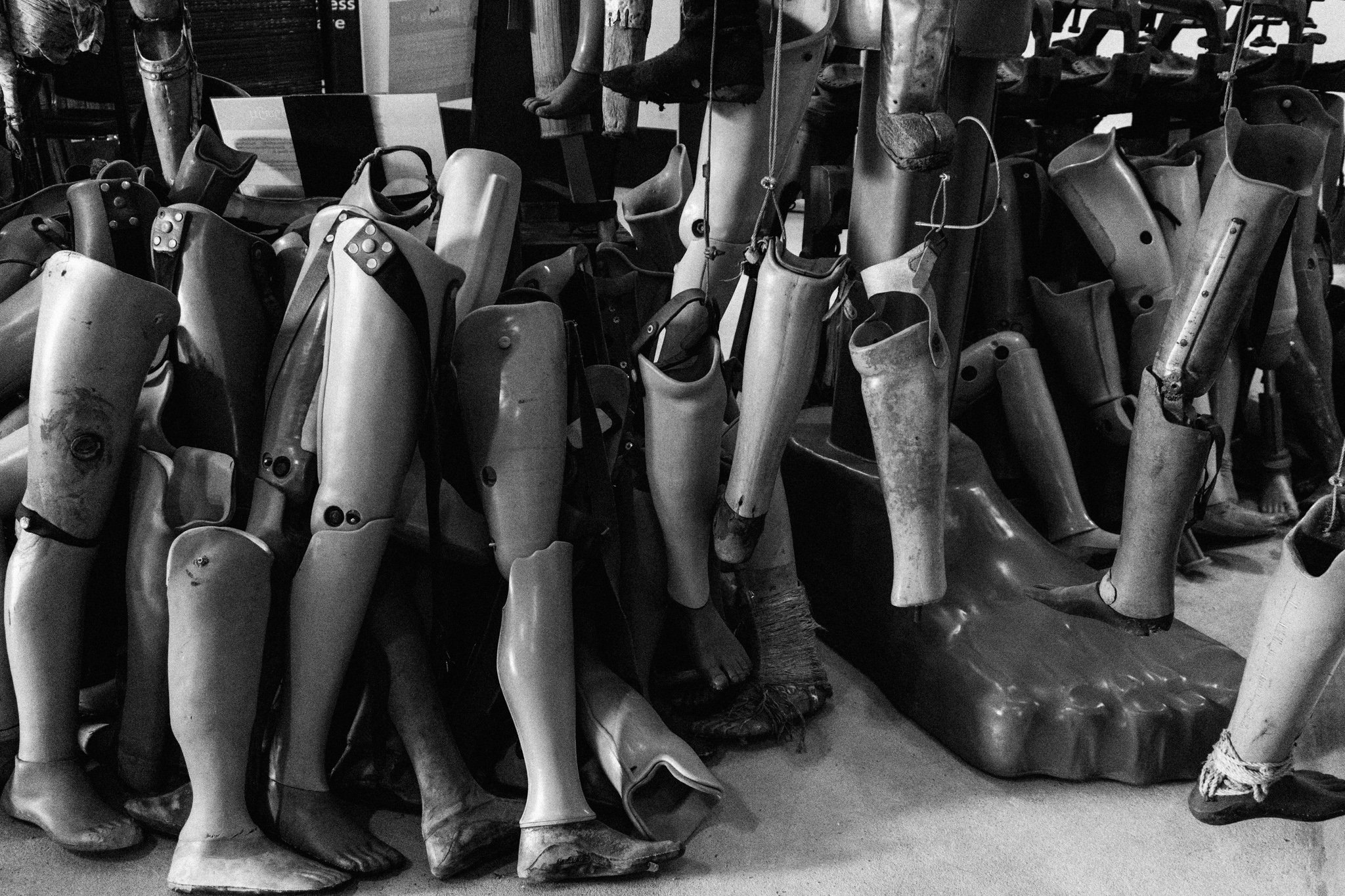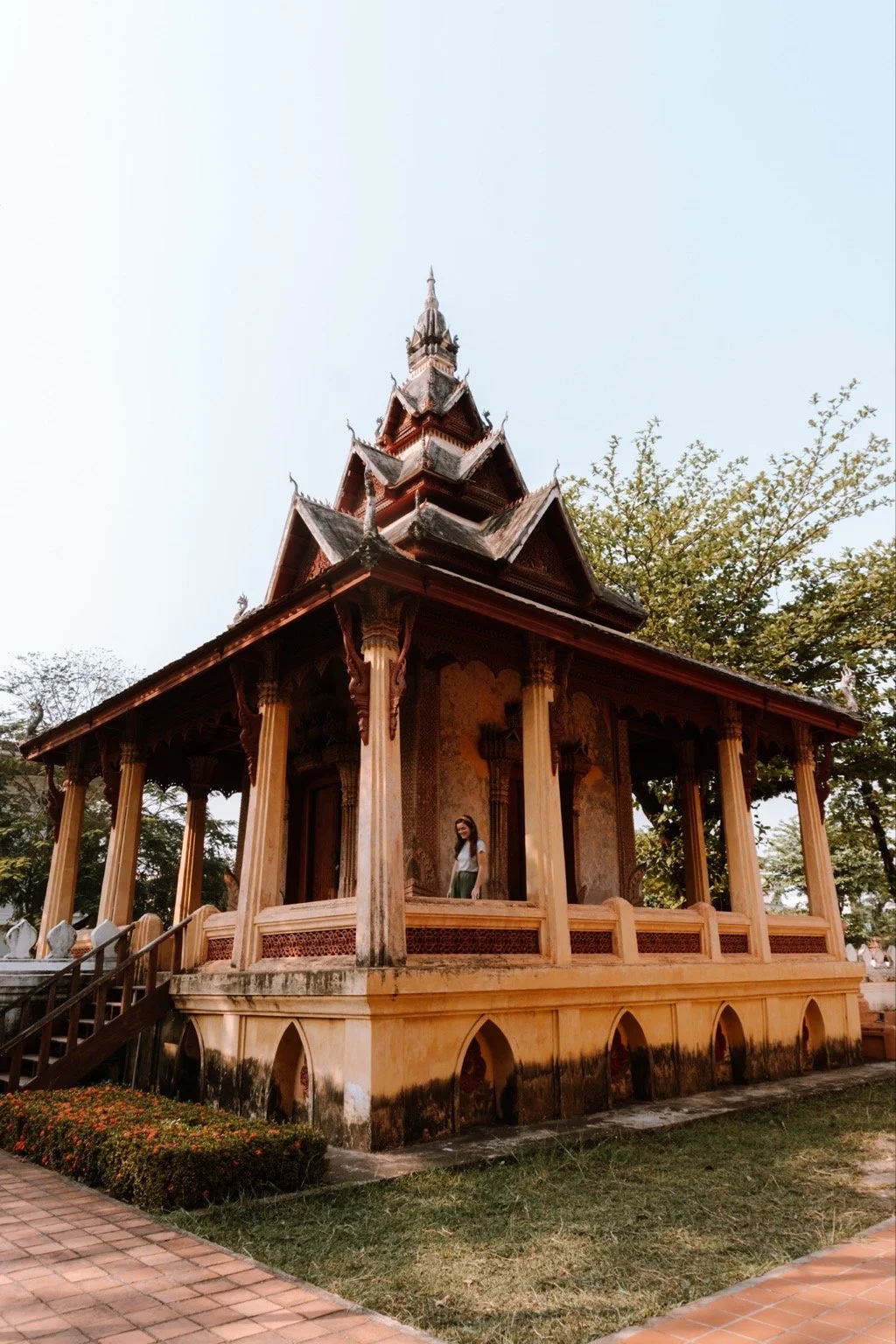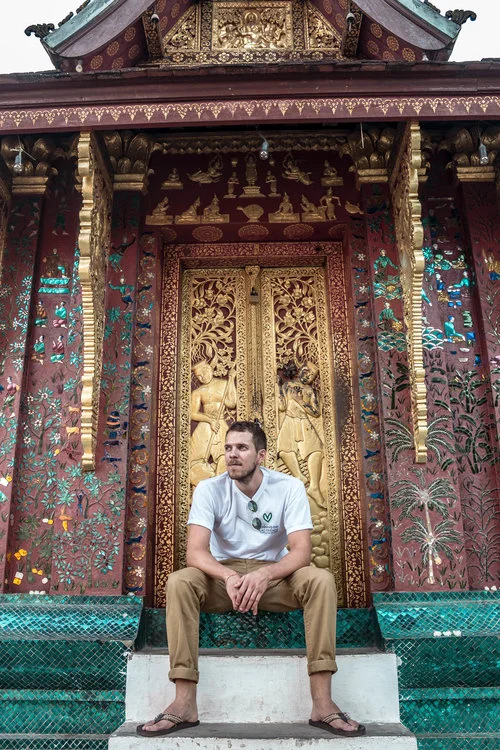15 Things to Do in Vientiane: A Travel Guide to Vientiane, Laos (2025)
If you’re headed to Vientiane, Laos, you’re in luck! I’ve compiled the 15 very best things to do in Vientiane and created this guide to lead you around the city so that you can have the best time while you’re there.
I lived in Laos for three years before I truly enjoyed visiting the country’s capital. So, you can trust me when I say I’ve explored Vientiane thoroughly and found cool, cultural, and culinary things that every traveler should see and do. From French colonial architecture to Theravada Buddhist temples, and from the UXO Center to quirky sculpture parks, this guide has compiled the 15 best things to do in Vientiane so that you can plan the perfect trip.
And, planning the perfect trip to Vientiane is important, because it’s usually tourists’ first impression of Laos.
It’s honestly kind of a shame because Vientiane is so different from the rest of the country is like. There are a few things to make note of when visiting Vientiane. For starters, there is a heavy, heavy Chinese influence here. Vientiane is the business hub of Laos, and much of its trade is with China. Because of this, there are a lot of Chinese restaurants and tourist establishments that cater to the Chinese traveler. Secondly, it’s slowly evolving from a sleepy city into something closer that more closely resembles a capital metropolis. If you go expecting to walk into Saigon or Hanoi, you’re sadly mistaken and you’ll be setting yourself up for disappointment. Finally, the city’s infrastructure isn’t fantastic and major attractions are a bit spread out.
In general, it’s just not a place I’d recommend tourists dedicate huge chunks of their Laos itinerary to, because it hasn’t quite figured itself out yet. Vientiane is truly indicative of the ways in which Laos has been left behind in comparison to most of its neighbors (China, Vietnam, and Thailand). In truth, Vientiane desperately wants Laos to have an economic influx from tourism so that it can become more Bangkok-like. There just isn’t the same money, marketing, or tourism to support that dream.
Follow this guide and I guarantee you’ll find
how to get to Vientiane ↴
To get to Vientiane, Laos, there are several options depending on your location and budget. If you are coming from a neighboring country like Thailand or Vietnam, you can take a bus or train to the border and then cross over into Laos. You can also fly directly to Vientiane's Wattay International Airport from major Asian cities such as Bangkok, Hanoi, or Kuala Lumpur.
If you’re in Laos, you can take a domestic flight to Vientiane or travel by bus (usually a shuttle van), train, or private driver. You can purchase bus tickets directly from the bus stations in whatever city or town you are traveling from, but you should know that they typically don’t leave the station until they are filled with passengers, no matter what time they are scheduled to depart.
Personally, I recommend utilizing the new train system if you’re traveling from North to South (or vice versa). Opened for operations in December 2021, the train is brand new, clean, and highly time efficient.
The truly adventurous can opt for taking the slow boat down the Mekong River from northern Laos or northern Thailand. This is a popular option with backpackers and there’s no shortage of scenery along the way. However, it will take a chunk of travel time, so if you have a tight schedule to keep, I’d opt for one of the other aforementioned modes of transportation.
how to get around Vientiane ↴
There are several options for getting around Vientiane. One of the most popular ways to explore the city is by renting a bicycle or scooter. This allows you to explore at your own pace and gives you the flexibility to stop and explore the various temples, markets, and other attractions that dot the city. You can typically hire a motorbike from your hostel or this can be arranged with your hotel concierge. Make sure when you rent a motorbike that it comes with a helmet, as driving laws are nearly non-existent and traffic can be pure chaos.
Tuk-tuks are also a common mode of transportation in Vientiane and are especially useful for shorter trips within the city. If you're looking for a more comfortable and air-conditioned ride, taxis are available, but it's important to negotiate the price before getting in. If you can pre-book a taxi with help from your accommodation, I would recommend doing so. Lastly, there are public buses that run throughout the city, but they can be difficult to navigate if you're not familiar with the area and language barriers do sometimes exist.
where to stay in Vientiane ↴
Vientiane isn’t known for its fabulous accommodation. While it has gotten better in recent years, and more hotels, Airbnbs, and hostels are popping up all the time, it can be tricky to book a stay in Vientiane that is well-located, clean, and looks like the photos online.
budget stays
SYRI Boutique Guesthouse Restaurant + Café | clean, comfortable, spacious rooms at an affordable price, very well located
Barn Laos Hostel | basic, clean dorm rooms in a good location
mid-range stays
Lao Poet Hotel |modern, well-located hotel with a rooftop swimming pool
Green Park Boutique Hotel | a beautiful boutique hotel with heritage decor
luxury stays
Crowne Plaza Vientiane | only 15 minutes from the airport with 198 contemporary rooms
Eastin Hotel |a luxury stay located on the banks of the Mekong River
We love using Booking.com to book the best places to stay around the world.
where to eat in Vientiane ↴
It might surprise you to know that Vientiane has a pretty booming café and bar scene for a city of its size. There are luxury wine bars and artisan coffee shops, Pakistani food and vegetarian buffets. Put simply: you won’t be hurting for options.
Regarding dietary restrictions: Those with gluten-free and vegan dietary requirements or other allergy restrictions may find it difficult to find local food that correctly caters to their needs. Food may be marked on menus as vegan or glutne-free, when it actually contains fish or soy sauce.
The Cabana Design Studio + Café | delicious brunch options served in a beautifully designed café with minimal interiors, near the night market
Juliet Bistro| pasta, salads, + indulgent pastry options served with some of the best wine in Laos
Need Café | new on the café scene, minimal interiors, delicious food and decent coffee
Bar 2 Bros | a tiny little café with a (very milky) signature drink— the Butterfly Pea Latte
Café Sinouk | like Laos’ answer to Vietnam’s chain coffee shop Cong Caphe, good for standard breakfast
Dough + Co. | delicious doughnuts, large glasshouse-style building that’s bright and airy
Common Grounds Café | a café with a socially conscious mission, great falafel pita
Vegetarian in the Golden Age | famous for its vegetarian lunchtime buffet, not available on Sunday, run by Vietnamese nuns, cheap
Coco + Co. Vegan Café | known for its vegan goodies, prices are a bit inflated for the portion sizes, but a really lovely space with plenty of seating and WiFi
Jamil Zahid Indian + Pakistani Food | fantastic flavors and heaping portions for a tiny price tag, ignore the unkind reviews about its aesthetics because the food and service are seriously good
Pomodoro Pizzeria | if you’re in the mood for Western food, try the calzones
15 things to see + do in Vientiane ↴
educate yourself at The Cope Center
Most travelers in Southeast Asia are aware of the Vietnam War, but they have no idea that Laos is the most bombed country in the world. More than Afghanistan, Germany, and even Syria. The U.S. dropped the equivalent of one planeload of bombs on Laos every 8 minutes, 24 hours a day, for 9 years. That’s the equivalent of 2.5 million tonnes of ordnance. One of the best ways to educate yourself on what has become known as the “Secret War” is by visiting the COPE Center. I consider this a highly important stop no one should miss on their Vientiane itinerary. The COPE Center works with thousands of people who have mobility disabilities, particularly UXO survivors. The COPE Center educates visitors with films, photos, and realia displays about the dangers that unexploded ordinances present to the health of local communities and their economic development.
ADMISSION | free, donations welcomed
night market
Like most cities in Southeast Asia, Vientiane has a night market situated along the city’s waterfront. The market opens at sundown every night, and you can expect stalls selling clothing, souvenirs, handicrafts, and art. There are also a variety of street food vendors selling snacks like barbequed meat skewers and Lao sweets. If you’re on a budget, this is a great place to grab an affordable meal. The market is located right along the river separating Thailand from Laos, so you can grab a bite to eat and stroll along the bank, waving to Thailand on the other side.
ADMISSION | free
Victory Gate Monument- Patuxai
This is going to be an unpopular opinion, but the Victory Gate is probably my favorite spot in Vientiane. The golden hours of an evening spent here are truly as beautiful as they are peaceful. The fountains at the monument and the long road leading up to it might remind you of Paris, and there’s a reason for that. The Victory Gate Monument was built using concrete donated by the United States to commemorate the Lao people who died in the fight for their independence against the French. I guess the place was just beautiful to me and it broke up the temples and stupas a bit. You can pay to walk up to the top, but you have to do so before 5 PM when the stairwells close.
ADMISSION | free
That Luang
That Luang reminded me of the Shwedagon Pagoda in Myanmar on a teeny, tiny, itsy-bitsy scale. Pha That Luang is a stupa covered in gold leaf that sits in the center of Vientiane. It was initially constructed in the 3rd century, but since then, wars and invasions have required it to be renovated and reconstructed multiple times. Today, it remains a holy site for Buddhist locals. Many people in Laos make pilgrimages to Pha That Luang during ceremonies and religious festivals.
ADMISSION | USD $2 for foreigners
check out the city’s temples
There are plenty of beautiful temples in Vientiane. Some of the more well-known temples do charge a small entrance fee, though it is rarely more than USD $1. Bring cash in case there is a fee, and know that they will check your ticket if they charge an admission fee. Some of my favorite temples from my time in Vientiane are:
Wat Sisaket
Wat Phra Kaew
Wat Inpeng
ADMISSION | smaller temples are free, but some temples charge a USD $1-2 equivalent in LAK
That Dam
That Dam is simply a large stupa. The ancient folklore that surrounds it, however, makes it a cultural landmark of the city. Many locals believe that the stupa is protected by a 7-headed naga, which watched over the stupa when the city was invaded in 1827 by the Siamese army. Oddly enough, this historic landmark is now basically a large roundabout that is surrounded by wine houses and noodle restaurants.
ADMISSION | free
explore Buddha Park
Xieng Khuan, also known as Buddha Park, is a public park that sits 25 kilometers outside of the city along the Mekong River. This park is not a temple, but it contains more than 200 religious statues scattered across the grounds. The major piece of interest is a reclining Buddha that was designed by a monk in 1958 and is nearly 40 meters high. While there isn’t a strict dress code enforced, anytime you are in front of an image of the Buddha, it’s most appropriate to be dressed modestly.
ADMISSION | roughly USD $3 for foreigners
Lao National Museum
Those wanting to gain deeper insight into Lao culture and learn about the country and its people’s complicated history, you’ll want to head to The National Museum. From the outside, the National Museum, also referred to as the Lao National Museum, may not look like much, but it is a great starting point for travelers in Vientiane. Set in a derelict French colonial building, the museum houses a number of exhibits showcasing local artifacts, artwork, and photography. There are also a number of oddities and political mementos on display, including an uncut brick of cocaine from a drug raid (kind of crazy right?) and a lot of anti-American rhetoric (understandable given the history). The museum is closed on the weekends, so plan accordingly!
Lao Textile Museum
No traveler in Laos can visit without noticing the intricate weaving and hand-dyed fabrics it masterfully produces. Night markets and boutique shops alike sell intricately woven sinh, scarves, and shirts reflective of ethnic minority signature patterns and designs. That’s why a visit to the Lao Textile Museum is a must when in Vientiane. The museum was once a small, family-owned boutique. Today, however, the museum has been moved to a traditional wooden house on a lush property to better signify its importance as a key cultural museum in Vientiane. Textiles play a major role in Lao culture. It is estimated that since long before the Tang dynasty, people in Laos were weaving textiles as physical records of history. The museum is filled with tools and looms used in traditional weaving and textile production. Various ethnic groups throughout Laos are represented in the museums too, making it an excellent way to learn about the diversity of the country. The museum actively works to educate tourists on the importance of preserving and protecting textile arts in Laos from threats that accompany development and globalization. For a more hands-on experience, you can opt to take a scarf dyeing workshop at the museum.
ADMISSION | LAK 35,000 (USD $1)
Chao Anouvong Statue
Looming above the major road that runs parallel to the night market is a statue of Chao Anouvong, the late King of Vientiane. The statue was erected in 2010 to mark the 450th anniversary of the founding of Vientiane. Anouvong was King of Vientiane from 1805 to 1828, during a time when Laos was split into three kingdoms: Champasak, Vientiane, and Luang Prabang. You can visit the statue and take a photo underneath it on your way to the night market.
take an art class that empowers
The Lao Disabled Women’s Development Center is a non-profit organization run by Lao women with disabilities for Lao women with disabilities. It is a safe space for those women to live and study. Here, women can find community as well as learn skills meant to equip them with the skills necessary to live an independent life, complete with vocational training. As a visitor, you can take an art class led by women from the center. These workshops highlight traditional handicraft skills and artistic methods. There are half and full-day workshop options, with lunch available on-site. If you don’t have time for a class, you can support the Lao Disabled Women’s Development Center by purchasing some of the artwork created by the women.
ADMISSION | contact the center for the available activities and prices
Kaysone Phomvihane Museum
The Kaysone Phomvihane Museum is located in the house of the former president of Laos. The Kaysone Phomvihane Museum is a museum that details the life of one of the most famous communist leaders in Indochina and the first leader of the Communist Lao People’s Revolutionary Party. Though he passed away in 1992, his home has remained just as he left it. The memorial offers visitors an authentic look at Lao politics. If you’d like to take a guided tour, they are usually available, though very informal.
Wat Dane Soung
This temple deserves its own spot on this list because it’s rather obscure. Wat Dane Soung, also known as the “jungle temple”, is filled with a number of Dvaravati-style Buddimages carved into rock and painted gold. Most travelers don’t make it out to Wat Dane Soung, as it is well off the beaten path. In order to reach this hidden temple, you’ll need to rent a motorbike or hire a driver/tuk-tuk. From the city, you’ll have to drive North approximately 20 kilometers to Houakoua village, then West towards Ban Nagnang. In Ban Nagnang, you’ll find a car park near a lake. Walk from the car park into the jungle to Dane Soung.
ADMISSION | free
Nam Ngum Lake
Visitors in Vientiane seeking a taste of nature should consider relaxing lakeside at Nam Ngum Lake, Nam Ngum Lake is the largest lake in Laos, surrounded by lush greenery and Lao countryside. There are kayaks and canoes scattered around the shoreline for hire, which is a great way to spend a couple of hours. Funnily enough, there is also a swimming pool located in the lake (you read that correctly) where you’ll often find locals cooling off in the evenings.
ADMISSION | free
Tha Ngon Floating Restaurant
The Tha Ngon Floating Restaurant is a favorite amongst Vientiane locals, and is a quintessential Lao experience that cannot be missed if you’re traveling in Vientiane with a group! Here, customers get a personal houseboat where wait staff serve a traditional Lao meal. There is typically karaoke (a Lao favorite), BeerLao served with a classic bucket of ice, and lots of spicy local delicacies. It costs roughly USD $15 to rent a 10-person houseboat, but it’s normal for smaller groups to book a boat to enjoy an authentic local meal away from any tourist traps.
map ↴
Find all the best things to do in Vientiane, Laos on the map below.
